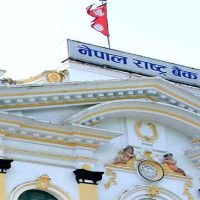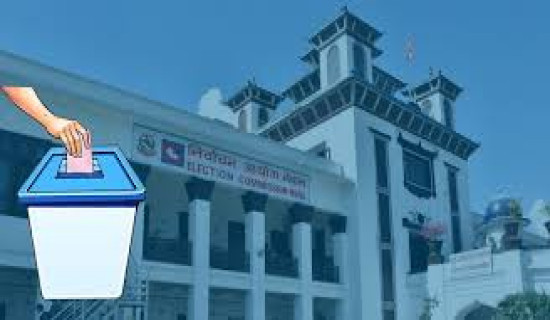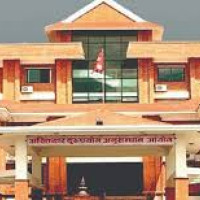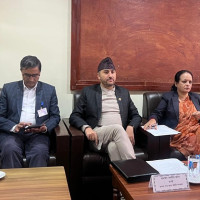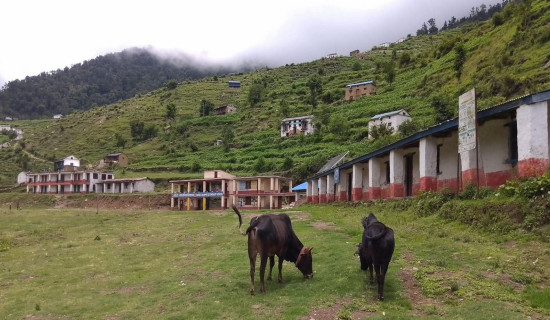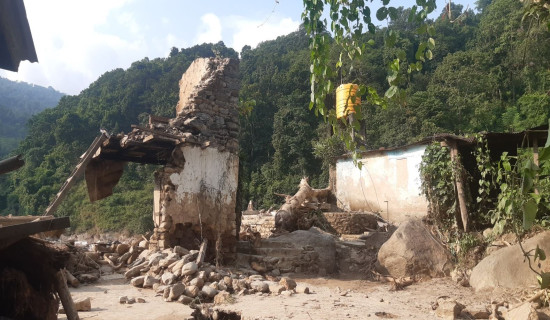- Tuesday, 16 December 2025
Fixing Anomalies In Planning, Development
Nepal is in a vicious trap due to accumulated issues and problems in planning and development. Trial and error method, identical to allegories like ‘running with scissors’ and ‘beating around the bushes’, has been the characteristic, just as the equivocal and much criticized political system, constitution and governance.
There have been decent planning documents, such as the national plans and MDGs/SDGs. The project life cycle phases entailing such including initiation, planning, execution, monitoring and control, and closure, are not managed meticulously and accountably. Hundreds of infrastructure projects all across Nepal are found in limbo, such as roads, bridges, culverts and irrigation, as if they are abandoned or let die. Critics believe that political rivalry, kickbacks, and relaxation of construction contractors are the principal delinquencies.
Out of 27 national pride projects, only a few are completed. Kathmandu-Tarai Expressway (fast track) took an enormous time and cost overruns. More than external forces to blame, it is primarily the ruling governments that failed to appraise and scrutinise beforehand the mega project feasibility plan and geopolitics, as it applied to the construction of international airports in Bhairawa and Pokhara, which are now of dismal use, becoming white-elephant, for instance. The Melamchi Drinking Water mega project also endured bitter experiences.
Human factor
Human factor plays a critical role in planning and development. There is a potential risk if the duty bearers, including political leaders holding specific portfolios, do not become the positive ‘role models’. No work ethic, just as the characteristic of feudal lordship seeking ‘rent’ or unwarranted advantage, keeping oneself in a comfort zone, could be damaging.
One wonders why each project is budgeted for the full amount and full team of workforce, but still suffers badly. How? A power-centric remote control of annual programme budget allocation and implementation, nepotism, motivation of kickbacks, time and cost overrun and overriding the ‘rule of law’ are at the cost of achieving national development goals and objectives. A vibrant work team machinery where duty bearers, including political leaders, sincerely and godly discharge their duties, is a must. They must reciprocate ‘value for money and ‘value additions’ in their job, and not simply become pay cheque recipients and pensioners.
Due to year-round political engineering and scheming power games by the political parties in power even while on paid duty hours (conflict of interest), the Five-Year Plans have been implemented dismally scoring only an average of 30 per cent result, and likewise annual capital spending of less than 40 per cent, whereas the administrative and operational cost exceeding the target of 100 per cent, is catastrophic. Any frequent reshuffling of duty bearers and political leaders in charge of a portfolio, such as transfers before completion of any specific project, may be counterproductive, which may even debilitate the punishment of the exact culprit for any misdoings or misuse of funds and authority, possibly making the scam a success, and the infrastructure project underway remaining in limbo.
A high density of 36,000 elected representatives from the federal to local governments, 884 parliamentarians (federal and provincial) and 130 ministers and at least 136,000 government employees, constituting a jumbo government workforce team in the federal setup, are superfluous and the most expensive size to sustain, needing downsizing by, say, 50 per cent, including a radical reformative action.
Development should start from ‘small’, inclusive and equitable, given the scarcity of technical and economic resources, and considering the geo-demographical diversities and difficult terrain. Small is beautiful, meaning feasible, sustainable, and replicable. ‘Make in Nepal’ for self-reliance, substituting costly imports, is the key. Building upon what Nepal has, first, should be the norm. Ability lies not in personal glorification but in competence, sincerity and hard work. In development, misgovernance and loss of accountability are the assassins. Ownership and synergy and a multiplier effect, created in national/community development through an integrated development approach, are cardinal.
In this context, the development initiatives of Mahabir Pun, former head of the National Innovation Centre and currently Minister for Education, Science and Technology, Mayor of Kathmandu Metropolitan City Balen Shah and Mayor of Dharan Sub Metropolitan City Harka Sampang have yielded positive outcomes as they initially start from a ‘micro’ and ‘doable’ concept and with a low cost. Kulman Ghising, former Managing Director of Nepal Electricity Authority and currently the Minister for Energy, is another outstanding person having the capacity to implement the development projects.
Nepal's trade deficit in the fiscal year 2024/25 swelled to Rs1.527 trillion and the total external debt stands at Rs.1.40 trillion (24.56 per cent of GDP). Agriculture still employs over 60 per cent of the workforce but contributes only 24 per cent of the GDP. Eliminating extreme poverty in all its forms by 2030, as envisaged in Sustainable Development Goal (SDG) 1, depends largely on achieving rapid economic growth and bringing back an estimated 40 per cent of the total arable land that is lying fallow under intensive cultivation, thus maximizing production and productivity for self-reliance and sustainability.
A focus on irrigation of agricultural land and setting up a commercial fertilizer plant, and revival of about 46 closed-down large government and semi-government production and service industries (e.g., agriculture implements, textile, jute, cigarette, sugar, shoes, paper, cement, rubber-tyre, including a dozen industrial estates) is critical in Nepal’s context. Nepal has no choice but to revolutionize agricultural and industrial production, which are in reverse gear.
Unity and synergy in diversity, the foundation of development, are crippled in the absence of a balanced demographic spread and proportionate development of all the provinces. Maoist insurgency (1996-2006) and a top-down political power-centric government since Nepal transitioned to a Federal Democratic Republic in 2015, attributed to the ever-increasing concentration of migrants from all over Nepal in the Kathmandu Valley.
Dependency syndrome and outsourcing external powers and companies are at the cost of indigenous national initiatives. Even employment provision is outsourced, draining human capital overseas by approximately 1 million people, which includes school graduates. Approximately 30 million (1 out of 7 citizens) already live outside Nepal, whereas an estimated 3 million workers are needed additionally by 2030 to achieve Nepal’s development goals.
Peanut money
The national budget heavily relies on FDI, grants and foreign loans, whereas ‘peanut money’ is received due to ever-increasing loss of fidelity of the government’s in-house capacity, political instability, corruption and unscientific policy implications. Only 18.50 per cent of the Rs. 64.97 billion FDI commitment was received in the 2024/25 fiscal year. This further necessitates restructuring planning for self-reliance and mobilizing domestic resources, economic and human.
Constant vigilance, monitoring and ‘a stitch in time can save nine’ approach, including a ‘check and balance’ of authority in planning and development, can avoid chaos and pitfalls. Let us hope that the Gen Z revolution that took place against rampant corruption, misgovernance and irregularities will now enhance the participation of youths, including Gen Zs, in leadership roles, including planning and development and do away with anomalies hitting the nation for decades.
(The author writes on integrated development issues.)




